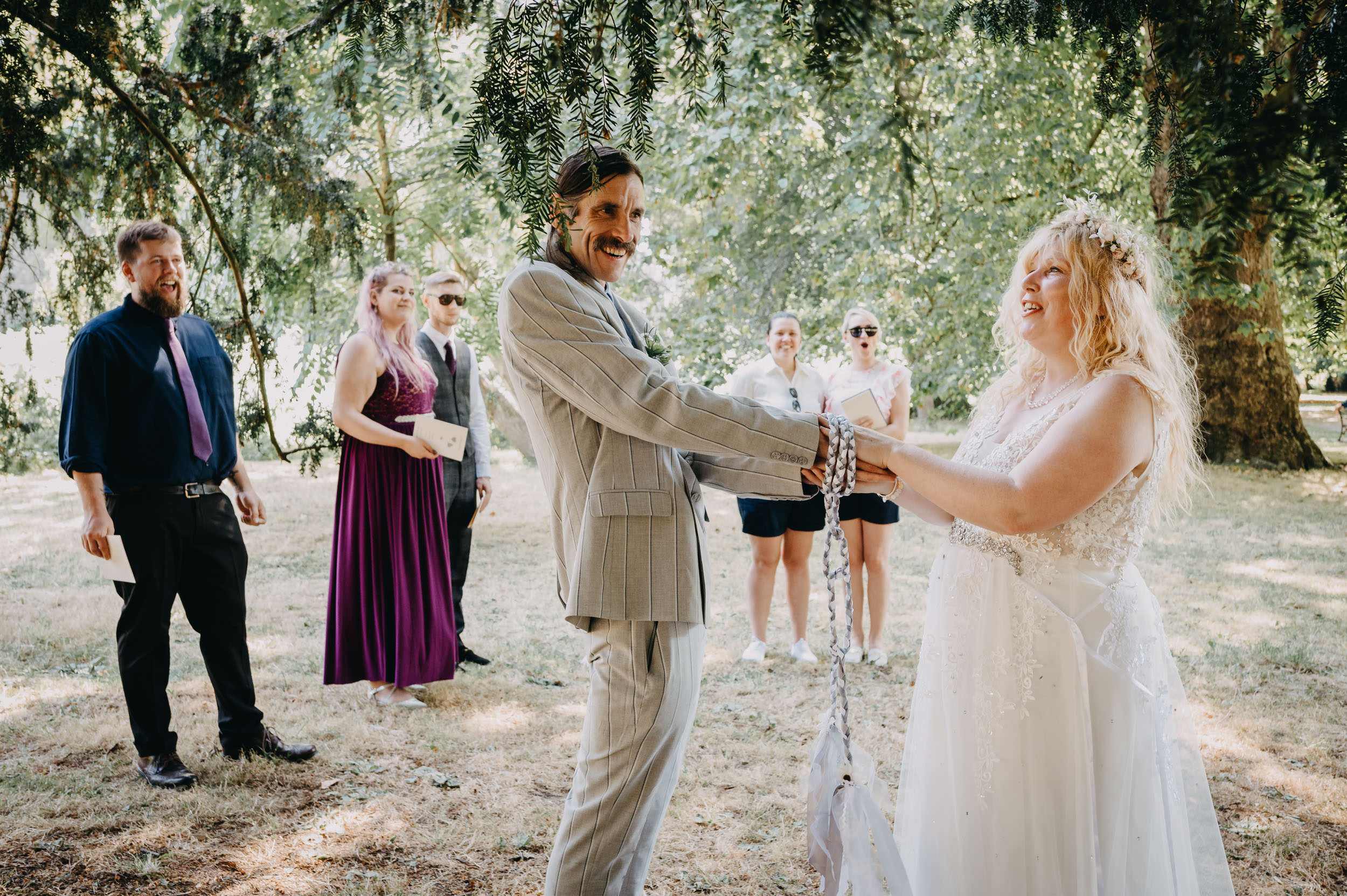What Is an Adventure Wedding?
An adventure wedding is a contemporary wedding format that blends elements of outdoor ceremony, personal journey, and symbolic transformation. It is typically held in remote, natural or unconventional locations and may involve physical activity, travel or exposure to the elements. It is considered a subcategory of both destination weddings and outdoor weddings. Unlike traditional weddings that centre on performance and social display, adventure weddings prioritise relational depth, spontaneity, and meaningful experience.[1] The defining aspect of an adventure wedding is not location or activity, but the couple’s willingness to embrace unpredictability and co-create their own rite of passage.
Historical Context
The emergence of adventure weddings is rooted in a convergence of social, economic and psychological factors that accelerated in the early 21st century. As traditional weddings became increasingly formalised, commercialised, and performance-driven, many couples began to seek alternatives that reflected their values, personalities, and relational priorities.
One significant shift was the boom in destination weddings, which accounted for 25% of all weddings globally by 2024.[2] While initially associated with luxury or exoticism, destination weddings evolved into vehicles for escaping social expectations and embracing simpler, more meaningful ceremonies.
At the same time, broader lifestyle trends—such as the rise of minimalism, adventure tourism, and sustainability—found expression in the wedding sector. Many couples began to treat their wedding not as a show, but as a collaborative life event: an intentional beginning marked by effort, presence, and shared vulnerability.[3][4]
Anthropologically, this represents a return to ritual in its most fundamental form. As van Gennep and Turner have argued, rites of passage involve disruption, transition, and transformation.[5] The physical challenge and unpredictability of an adventure wedding reflect these elements in real time, transforming the ceremony from a symbolic gesture into a lived experience.
Current Trends and Motivations
Contemporary couples increasingly prioritise authenticity, flexibility, and connection in wedding planning. Surveys indicate that sustainability, originality, and emotional depth are more important than pageantry or tradition.
A related survey found that 64% of engaged couples valued “creating unique experiences” over traditional rituals.[6] These preferences are reflected in the growing popularity of outdoor weddings, which 26% of UK couples described as their ideal setting.[7]
Psychologically, adventure weddings also provide a framework for bonding. Research in relationship studies shows that shared challenge and novelty can strengthen emotional ties through mechanisms like co-regulation, oxytocin release, and joint problem-solving.[1]
Many couples describe their adventure wedding as their first true test of partnership: navigating logistics in remote locations, adapting to unpredictable weather, or co-creating a deeply personal ceremony with little external direction.
Typologies of Adventure Weddings
Adventure weddings are best understood as a spectrum rather than a fixed format. While some involve high-adrenaline environments, others focus on narrative, symbolism, or isolation. Key typologies include:
- Remote-location weddings – Ceremonies held in hard-to-access locations like mountain summits, forest clearings, or desert plateaus. Often requiring significant physical effort or specialised transport.
- Activity-based ceremonies – Including hiking, paddleboarding, snowshoeing, or rock climbing as part of the day. The activity is not just a backdrop, but a meaningful component of the ritual.
- Symbolic journeys – Weddings structured around movement or transition, e.g. walking to the ceremony site, travelling by canoe, or camping over multiple days. These echo pilgrimage traditions in secular form.
- Rewilded or backyard adventures – Transforming familiar local spaces through intentional design, timing (e.g. dawn ceremonies), or symbolic subversion. Emphasis on mindset over setting. This approach overlaps with the idea of home-country destination weddings, where familiar settings are reimagined as meaningful and remote-feeling locations.
- Festival-style gatherings – Extended events with live music, group meals, and informal rituals. Inspired by communal experiences like Burning Man or Glastonbury.
Each of these formats challenges conventional wedding norms by emphasising presence over perfection, improvisation over scripting, and lived emotion over polished presentation.
Sociocultural Dimensions
From a cultural perspective, adventure weddings represent a microcosm of changing ideas about identity, partnership, and ritual.
In contrast to traditional weddings—which often serve to reinforce social roles and expectations—adventure weddings allow couples to design ceremonies that reflect shared values, rather than inherited scripts. This aligns with a broader trend toward “personal myth-making”: the creation of meaningful stories as a way to frame modern life transitions.[9][10]
The aesthetics of adventure weddings—raw landscapes, unfiltered emotions, unplanned moments—signal a rejection of perfectionism and a move toward authenticity. These ceremonies are not just alternatives; they are cultural critiques. They subvert the spectacle and return to the sacred.
In many ways, the wedding becomes less about the moment of union and more about the process of becoming—a process marked by movement, vulnerability, and the courage to do things differently.[5][8]
See also
References
- Burch, R. L. (2019). The Wedding as a Reproductive Ritual. Journal of Family Psychology, 33(2), 147–159.
- Hitched. (2024). Global Wedding Statistics.
- Parappagoudar, P. et al. (2018). A Study on Factors Influencing Wedding Quality. International Journal of Hospitality & Tourism, 7(4), 211–225.
- Johnson & Wales University. (2021). A History and Analysis of Weddings and Wedding Planning.
- van Gennep, A. (1909/1960). The Rites of Passage. London: Routledge; Turner, V. (1969). The Ritual Process. Chicago: Aldine.
- Zola. (2024). Wedding Style Trends Survey.
- Cal Poly University. (2020). Assessment of Future Trends in Wedding Planning.
- Turner, V. (1969). The Ritual Process: Structure and Anti-Structure. Chicago: Aldine.
- Douglas, M. (1966). Purity and Danger. London: Routledge.
- Gell, A. (1992). The Anthropology of Time. Oxford: Berg.





